There are many different options for treating back pain, and depending on the cause, a combination of different therapies may be required. Since everybody is different, what works for one person may not work for the next, so it is important to find what works for you.
Trigger Points in Lower Back
| Your myotherapist treats soft tissues, bringing the musculo-skeletal system back to a state of balance. A Myotherapist may use techniques such as; muscle manipulation, dry needling, trigger point therapy, cupping and will provide the client with advice regarding self-treatment, corrective exercises and stretches. Another form of treatment that is very beneficial is floatation therapy. By lying in a quiet, dark floatation tank that is filled with 350kg of Epsom Salts (magnesium sulphate), a client can get relief from lower back pain through calming the nervous system, removing gravity creating a feeling of weightlessness, and also by offering natural pain relief through endorphin-release. |
There are certain factors that can increase your risk of developing back pain, or aggravate it once you have it, including:
- Being stressed or anxious
- Poor posture
- Standing, sitting or bending down for long periods
- Lifting, carrying, pushing or pulling loads that are too heavy, or going about these tasks in the wrong way
- Having a trip or a fall
- Being overweight
- Weak core muscles
- Wearing incorrect shoes
- Sleeping on a mattress that is not suitable for you body
- Using the incorrect pillow - you should consider a pillow and sleep consultation at the clinic
Self Care for Lower Back Pain
If you are suffering lower back pain, these are some of the things that your myotherapist can recommend to you to help, it if you can’t see a health professional straight away.
- Cool or Heat Therapy - Ice is best in the first 24 to 48 hours after an injury because it reduces inflammation. After 48 hours, you can switch to heat which will help to relax the muscles, as well as providing some pain relief. Whether you use heat or ice — take it off after about 20 minutes to give your skin a rest. If pain persists, talk with your myotherapist.
- Natural Pain Relieving Gels - Sombra is a fast acting natural pain relieving gel that brings temporary relief to lower back pain and other forms of pain.
- Keep moving - As much as you may not feel like it, it is important to keep moving – keep doing your daily activities where possible. Moving will stop muscles and joints from stiffening up, which will only make the pain or discomfort worse. Only do what you can, don’t overdo it. Gentle movement such as walking and swimming are great ways to keep mobile. As you get better, increase your activity levels and your myotherapist will recommend exercises to help strengthen the muscles around your spine, pelvis and core muscles, as this will increase your back support.
- Stretch - Gentle stretching can really help your muscles to stay flexible and can help to reduce tightness. If you are sitting a lot, getting up to stretch your legs is important as inactivity (especially sitting for long periods) will only make your back pain worse. Or you can also try sitting on a firm chair instead if your soft couch.
- Watch your posture - Slumping makes it harder for your back to support your weight. Be especially careful of your posture when lifting heavy objects. Never bend over from the waist. Instead, bend and straighten from the knees.
Call Your Doctor If:
- You have weakness or numbness in your legs, or you have trouble standing or walking.
- You lose control over your bowels or bladder.
- Your low back pain is severe, doesn’t go away after a few days, or it hurts even when you’re at rest or lying down.
It is good to take note of what you have been doing (or not doing!) that affects your back pain. Some ways to prevent lower back pain include:
|
- Sleep - Sleeping on your side with a good mattress and good pillow, making sure to alternate sides.
- Posture - Good posture is vital to minimising back problems.
- Shoes - Avoid wearing high heels, wear comfortable and supportive shoes to help maintain good posture.
- Get bodywork - Myotherapy is a great way to keep your musculoskeletal system in balance, which can prevent you getting back problems. Your myotherapist will give you specific strengthening and stretching exercises to bring balance back to your body.
- Think ergonomically - Design your workspace so you don’t have to hunch forward to see your computer monitor or reach way out for your mouse. Use a desk chair that supports your lower back and allows you to keep your feet on the floor.
- Stop smoking - Smoking can increase your risk for osteoporosis of the spine and other bone problems. Osteoporosis can in turn lead to compression fractures of the spine.
- Watch your weight - Use diet and exercise to keep your weight within a healthy range for your height. Being overweight puts excess stress on your spine.
- Wallets - Removing your wallet from your back pocket can alleviate some stress on the back.
- Nutritional supplements - Fish oil and magnesium tablets can help with back pain.

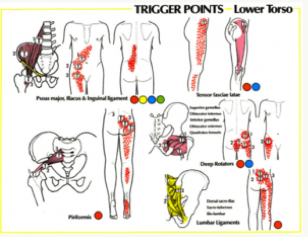
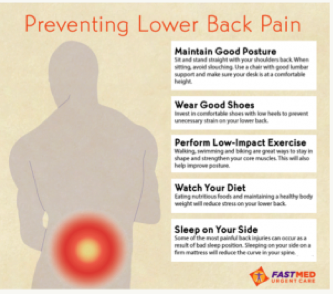
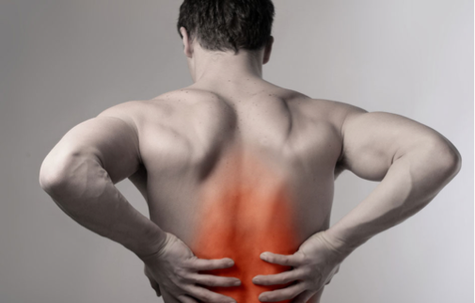
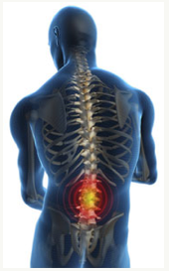
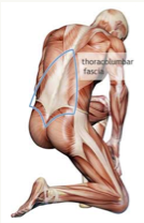
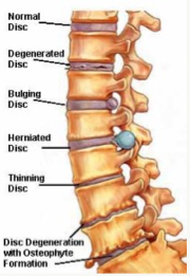
 RSS Feed
RSS Feed

















